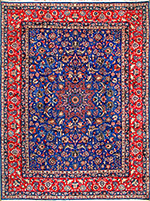Textiles Studies

Textile Research Works
Date of this Version
9-2015
Document Type
Article
Citation
ASIAN ART, SEPTEMBER 2015, p. 30.
Abstract
LUXURIANT AND extravagant are words that come to mind to describe the sheen of brightly coloured velvets on display in this small but stellar exhibition at San Francisco’s Asian Art Museum, on view to 1 November. The exhibition presents an exceptional private collection of exquisitely designed velvets woven in lands of the Mughal, Safavid, and Ottoman empires during the 15th through 17th centuries. Robust blossoms, sinuous vines, and stylised flowers are among the many designs that characterise Mughal, Safavid and Ottoman textiles, including sumptuous velvets with raised pile and metallic threads that shimmer in changing light. Together the products of these three distinct imperial traditions represent a period of fluid cultural exchange when commerce, technology, and diplomacy emerged through the interactions among established imperial domains and new European colonial powers. Commercial interests, trade, and diplomatic gifts ensured the fertilisation of imperial sensibilities from the East in palaces and mansions of the West. At the extreme upper end of technological achievements before the industrial age, velvets take the prize for the most elegant and opulent of all textiles traded across cultures. Distinctions in style, colour, and weave structure characterise each of the imperial traditions that contributed to a fascination with elegance, opulence and luxury in early modern Europe. ...
The objects on view, drawn from the New York-based collection of Rina and Norman Indictor, give evidence of this pinnacle of production, achieved simultaneously in Mughal, Ottoman, and Safavid realms. What remains perplexing is the origin of velvet-weaving; what is missing from the exhibition is a single example of the most colourful Safavid production of the 17th century, in which warp substitution allowed for the interplay of many more colours. And broader comparison with Italian and Chinese production could augment the exploration of cultural exchange, a subject that warrants future attention. The exceptional quality of dyes used in historical velvets is also evident in surviving examples, but is unremarked upon in the exhibition. This is also an area that would benefit from extensive analysis and further research.
Included in
Art and Materials Conservation Commons, Art Practice Commons, Fiber, Textile, and Weaving Arts Commons, Indigenous Studies Commons, Museum Studies Commons

